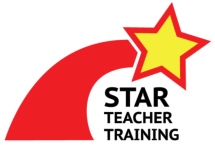For the last four years of teaching in public primary schools with different ages, levels, and topics I’ve only used one ESL board game. It has saved me countless hours of prep and made my lessons more student-centered. It’s endlessly adaptable for tons of ESL activities and doesn’t even require dice, which are easily lost or stolen. Print off a stack of these and get ready to rock your classrooms!

ESL Board Game Instructions
Each group of three to five students gets their own board game to play with. Students use their erasers, small toys, pen-caps or other miscellany as tokens to move around the board.
Students also don’t need dice to play (which easily get lost or stolen), instead they use a paper-clip, pencil (or pen), and a circle divided into 4 or 6 numbered sections.
They poke the pencil tip into the paper-clip and place it into the middle point of the circle. Then they use their other hand to flick the paper-clip so it spins around and lands on a section. They can then move that number of spaces around the board.

The first student asks a question and the others rush to react first, like in Listen Quick. Whoever first answers correctly gets to spin the paper-clip, move on the board, and then ask the next question. The first student to reach the end is the winner.
For example, they could play Spelling Dictation Listen Quick. The first student raises their arm and spells a word out-loud while the others listen. When the speaker finishes spelling and drops their arm the others quickly say what the word is. Whoever is the fastest gets to spin, move, and ask the next question.
Related: Get ESL Students Speaking with Speed Speak & Listen Quick
Variations and Topics
This ESL board game works with a wide variety of language topics and different actions:
Pointing: Put flashcards around the room like in Flashcard Safari. The speaker points to one and either asks a question or makes a true/false statement. This also works with a shared picture.
- Weather: The speaker says “It’s windy today,” and the others point to the correct weather flashcard. The speaker could also point and ask “What’s the weather like?” and the others could say “It’s (cloudy).”
Pointing works great with body parts, as well as with flashcards for things like colors, toys, or even time (with clocks card for different times).
Miming: Once students know the mime actions for the vocabulary or language and they’ve practiced in games like Drill Sergeant they can do actions to prompt their classmates to speak. This adds a nice element of movement as well.
- Sports: The first student says “play (football)” and the others rush to mime the sport. In another version, the first student could mime a sport and the others would say “You’re playing (baseball).”
- Health: Like with sports above, but instead the students mime things such as toothache, headache, stomachache, etc.
Miming works with many other topics including; animals, clothes (put on a hat/shirt/shoes), jobs, prepositions, and even school subjects.
Related: Move Your Students with Kinesthetic Learning and TPR in ESL

Shared Information Set Q & A: The students use a shared set of info that you’ve either given them or they’ve created in small groups to ask and answer questions or make true/false statements.
- Small Group Surveys: Students first work in groups of three to five to ask each other questions using pre-made surveys. They record answers on their survey tables and then use those answers in the board game. For example, one student asks “What is (Tommy’s) favorite (sport)?” or “Who is this? He likes eating (hamburgers) and (fried chicken) but he doesn’t like (pizza).”
- Tables: You provide a table, such as a timetable or fact sheet about animals. Students then ask questions or make descriptions for each other to respond to. This works great when combined with an information-gap.
- Different pictures: Students play with a set of pictures, each labeled with a different number or letter. The first student describes a picture and the others respond with the correct letter or number.
Related: Settle and Succeed with Coloring Dictations
Download: STT Board Game Download
Looking for more ESL activity ideas?
Final ESL Board Game Notes:
Age Appropriate: This board game works best with students eight years old and above. Younger students usually don’t have the dexterity to both hold the pencil and flick the paper-clip on their own.
Make it bigger: I also usually make A3 copies to make it easier for students to handle.
Demo it: It’s usually necessary to demonstrate the game with a few students for a couple rounds. I work in Vietnam and many students aren’t familiar with Western board games. They need to see it in action to understand the basic mechanics, but they catch on quickly. Once they do…you can expect them to love it.
Timing & Winners: This game can easily last 10 to 15 minutes. If you’ve you’ve got a group that finishes early make sure to praise the winner and the group. Then you can encourage them to start over again. Most groups will happily give it another go.
Failure to Launch: Often there will be a group or two that are either slow to start or don’t at all. Make sure to identify them quickly and then take the lead. Put your own piece on the board and go first. Play a few rounds until the students are into the game and then take your piece and step away.
What topics will you use this ESL board game with? Please comment, like, and share.
Download Board Game file here:







